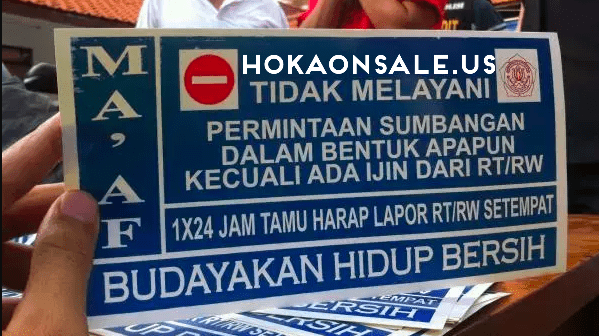
Applying Permission Marketing to Email Marketing
Created on 5 July, 2024 • Marketing & Business Communication • 129 views • 2 minutes read
The question is, if a person asking for donations or a sales promoter gets permission from the local neighborhood association, will we let them in? The answer might be yes, or it might be no, depending on each of us.
Applying Permission Marketing to Email Marketing
Have you ever seen or read something like the image below?
"Applying Permission Marketing to Email Marketing - 3"
Or a sign that says:
"Sales promotions are not allowed without permission from the local neighborhood association."
The question is, if a person asking for donations or a sales promoter gets permission from the local neighborhood association, will we let them in? The answer might be yes, or it might be no, depending on each of us. However, with written permission from the local association, it shows that they respect us as the homeowners.
The illustration above is an example of applying the concept of permission marketing. This marketing concept was introduced by Seth Godin, a world-renowned marketing expert. He introduced permission marketing through his book, "Permission Marketing – Turning Strangers Into Friends, and Friends Into Customers."
Interruption Marketing
In his book, Seth Godin also mentions the opposite of permission marketing: interruption marketing. We can understand interruption marketing through examples like this:
Dian is a housewife with one child. One day, her young child has a high fever and is fussy all day, refusing to eat or play, wanting only to stay with Dian while her husband is at work. Suddenly, Dian's smartphone rings, and it's a sales rep trying to sell her a car without asking about her situation first. Given her child's high fever, she declines, but the sales rep persists in offering the car in various ways.
We can guess how this scenario ends. Dian will likely get angry, hang up, and possibly block the sales rep's number. This is what we call interruption marketing.
Other common examples include ads on Facebook, YouTube ads while watching a video, or pop-up banners that appear while reading an article or news. It's no wonder most of us dislike these types of interruption marketing.
Permission Marketing in Email Marketing
When we run email marketing campaigns, we can either fall into permission marketing or interruption marketing.
Email marketing becomes interruption marketing if we obtain our email list improperly, such as by scraping or buying from third parties. In these cases, it's clear that subscribers did not knowingly and willingly give us their email addresses.
Even if we get a business card with an email address on it or find an email address on social media and add it to our list, that also counts as interruption marketing.
However, if we acquire email lists correctly, such as through lead magnets or forms, our email marketing can fall under permission marketing.
Here are some things we can do to ensure our email marketing remains within permission marketing:
- Implementing magic opt-in or double opt-in: This gives potential subscribers the chance to confirm their willingness. If they click the confirmation link consciously, it means they are giving us permission to send newsletters or broadcast emails.
- Providing an unsubscribe option: This is also necessary because if we allow people to join, we must also allow them to leave or unsubscribe.
This is how to apply the concept of permission marketing to email marketing. Hopefully, your subscribers will feel more comfortable receiving emails from you. I hope this is helpful, and see you in the next article.
Conclusion
Applying permission marketing to email marketing involves acquiring email lists ethically and allowing recipients to opt-in and opt-out freely. This approach respects the recipient's consent and can lead to more positive and engaged interactions.